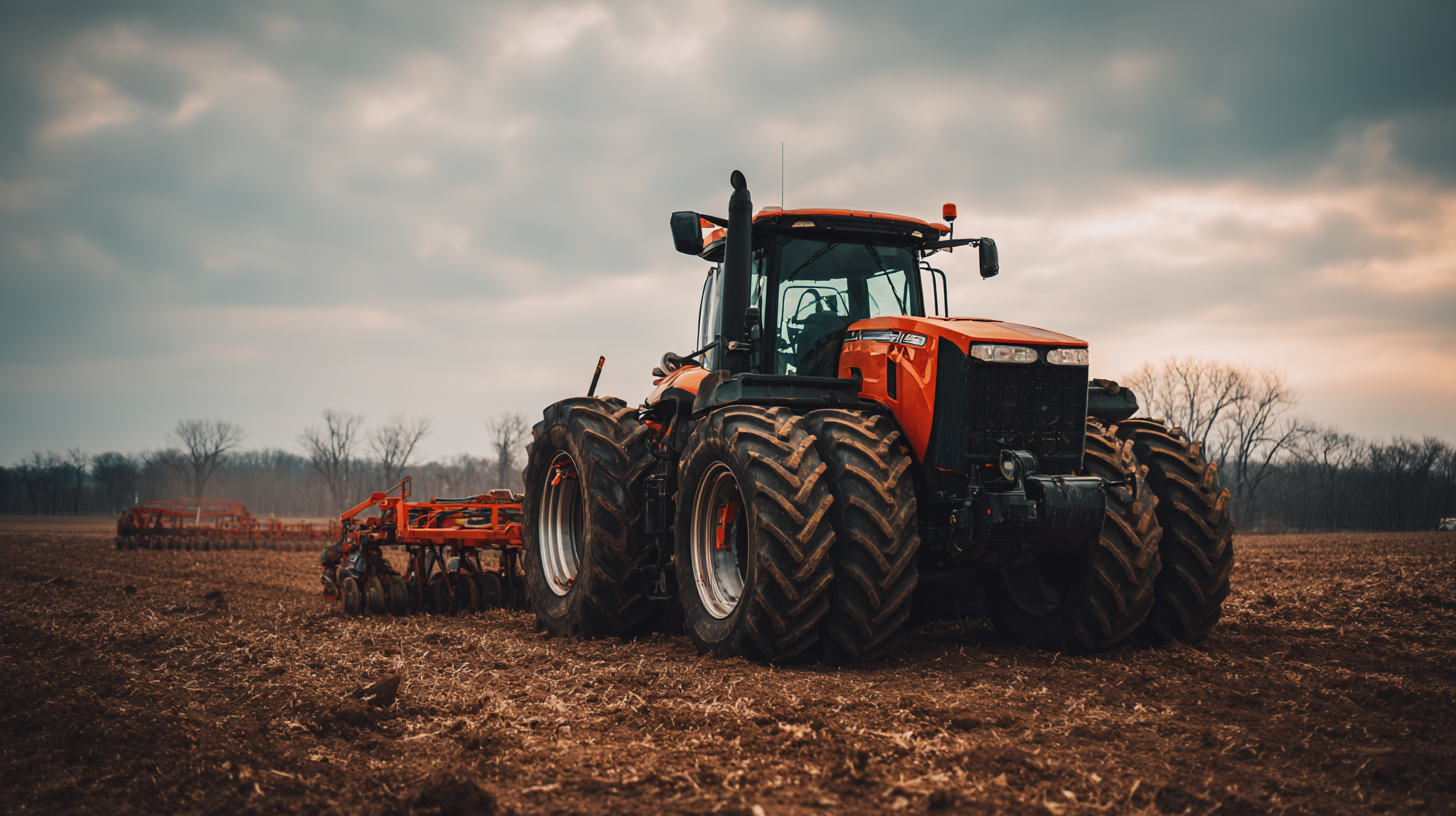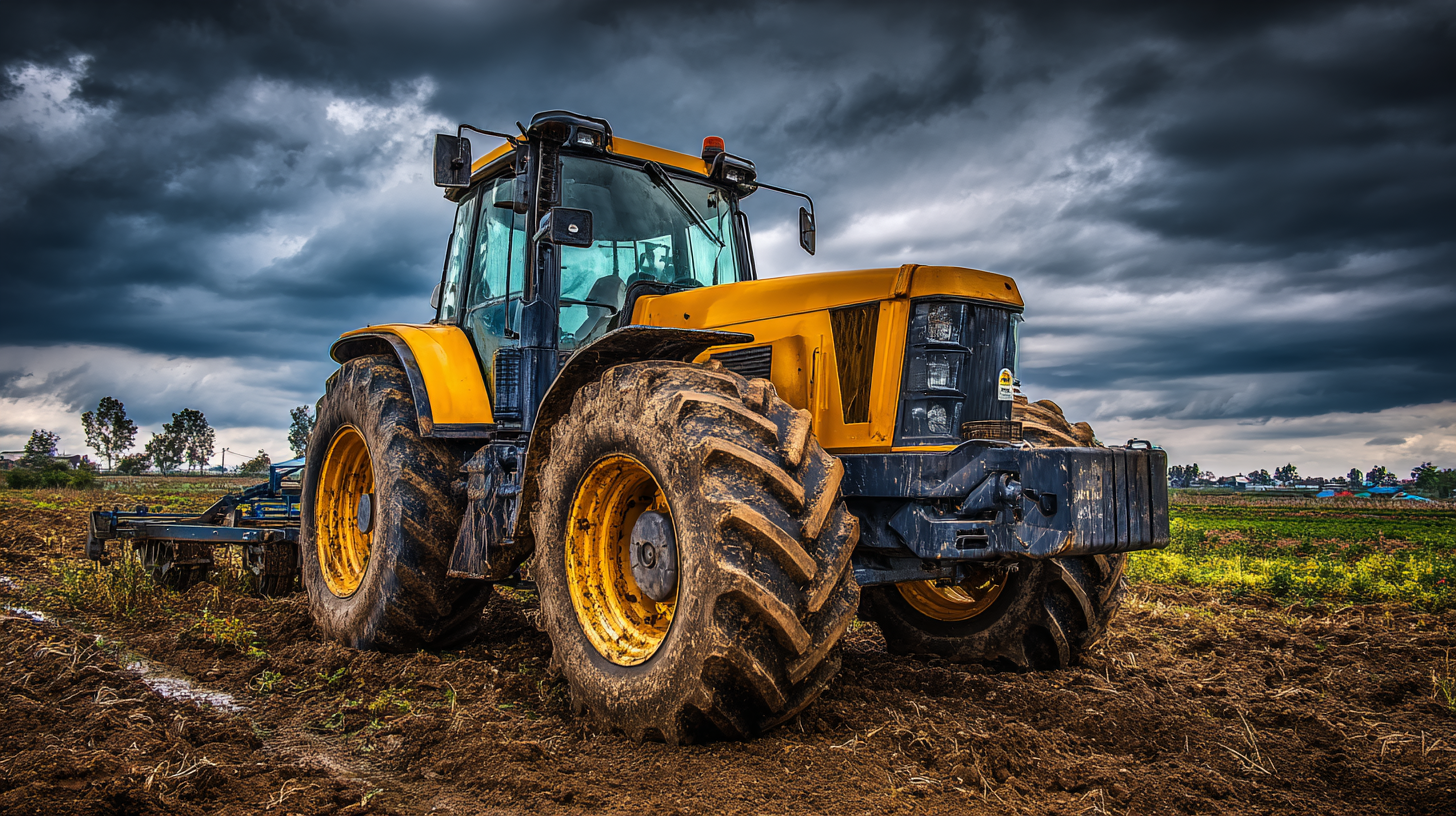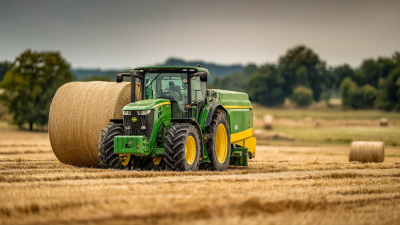The Ultimate Guide to Choosing the Right Mid Size Tractor for Your Farming Needs
When it comes to modern farming, selecting the right equipment is crucial for maximizing efficiency and productivity, and a mid size tractor often stands at the forefront of this decision. As farms become more diverse and demanding, mid size tractors emerge as versatile workhorses that can handle a variety of tasks, from tilling and planting to hauling and mowing. However, navigating the myriad of options available can be overwhelming. This ultimate guide aims to simplify the selection process by providing essential tips and insights for choosing the perfect mid size tractor to meet your unique farming needs. With careful consideration of factors such as power, size, attachments, and ease of maintenance, you can ensure that your investment will not only enhance your agricultural capabilities but also contribute to the long-term success of your farming operations.

Understanding Your Farming Requirements for a Mid-Size Tractor
When selecting the right mid-size tractor for your farming needs, it's crucial to first understand your specific agricultural requirements. Mid-size tractors strike a balance between power and maneuverability, making them suitable for diverse tasks on a farm. For instance, if your primary focus is on cultivating crops in large fields, a tractor with higher horsepower and advanced features may be necessary. Conversely, if you're managing an orchard or a small farm, a more compact design that allows for easier navigation in tighter spaces could be the better choice.
Additionally, consider the terrain and the types of implements you plan to use. Different tractors are designed for varying conditions; while some are optimized for rough terrains and heavy-duty applications, others excel in precision work on smooth surfaces. Assessing your farming environment and operational demands will guide you in choosing a mid-size tractor that enhances productivity and efficiency. By aligning your tractor selection with your farming requirements, you can ensure better performance and a more successful agricultural operation.

Key Features to Look for in a Mid-Size Tractor
When choosing the right mid-size tractor for your farming needs, focusing on key features is crucial to ensure optimal performance and efficiency. First, consider the engine power and torque. A robust engine will enable the tractor to handle various tasks, from plowing to hauling. Additionally, think about the transmission type; a hydrostatic transmission can offer smoother operation, especially when making frequent speed adjustments.
Tips: Always evaluate the horsepower in relation to the tasks you plan to perform. For instance, if you have larger fields or heavier implements, aim for tractors with higher horsepower. It’s important to match the tractor’s capabilities to your specific farming operations to enhance productivity.
Another vital feature is the hydraulic system. A powerful hydraulic system allows for better control of implements and attachments, which can considerably streamline your work. Also, don’t overlook the comfort features—like adjustable seats and ergonomic controls—since you'll be spending long hours in the tractor.
Tips: Test drive different models to assess the comfort and handling. A comfortable operator is a productive operator, so personal preference plays a key role in your decision.
Assessing Your Budget: Pricing Considerations for Mid-Size Tractors
When choosing the right mid-size tractor, assessing your budget is crucial. Mid-size tractors vary significantly in price, influenced by factors like brand, horsepower, and included features. Understanding your financial limitations will help narrow down your options, ensuring you don’t overspend or compromise on essential functionalities.
**Tips:** Start by evaluating your primary farming tasks. Determine the horsepower needed for specific implements, as this will guide your pricing range. Investigate various brands and models—some may offer comparable features at a lower cost. Additionally, don’t forget to factor in maintenance and fuel costs, as these can add up over time, impacting your overall budget.
Consider exploring financing options if your budget is tight. Many dealerships offer flexible payment plans that can make acquiring a quality mid-size tractor more manageable. By analyzing the total cost of ownership, including potential resale value, you can make an informed decision that aligns with your financial goals.

Comparing Popular Mid-Size Tractor Brands and Models
When choosing a mid-size tractor, it's essential to compare different brands and models to find the best fit for your specific farming needs. Popular brands like John Deere, Kubota, and Case IH each offer unique features that cater to various agricultural tasks. John Deere is renowned for its robust construction and advanced technology integrated into their models, making them versatile for various farming operations. Their 5E Series, for example, provides a balance of power and efficiency, ideal for both small and medium-sized farms.
On the other hand, Kubota has carved a niche with its compact design and ease of use. Their L Series tractors are particularly praised for their fuel efficiency and reliability, making them an excellent choice for farmers who prioritize operational costs. Case IH, known for its strong emphasis on comfort and innovative features, offers the Farmall series with impressive hydraulic capabilities, suitable for heavy-duty tasks. By closely examining these popular brands and their specific models, you can ensure that you select a mid-size tractor that aligns perfectly with your farming requirements.
Maintenance and Support: Ensuring Longevity for Your Tractor Investment
Maintaining a mid-size tractor is crucial for ensuring the longevity of your investment. Regular maintenance routines, including oil changes, coolant checks, and tire inspections, should be scheduled to keep the tractor in optimal working condition. Adhering to the manufacturer’s maintenance guidelines not only enhances performance but also helps in identifying potential issues before they escalate into costly repairs. Consistent care will considerably extend the life of the tractor, making it a more reliable ally for your farming needs.
In addition to routine maintenance, having access to reliable support is essential. Establishing a relationship with a reputable dealer can provide quick access to parts and expert advice when trouble arises. Furthermore, investing in extended warranties or service plans can offer peace of mind, protecting you from unexpected breakdowns. Consideration for after-sales service is a significant factor that contributes to the long-term satisfaction of your tractor investment, ensuring that your farming operations remain efficient and productive.
The Ultimate Guide to Choosing the Right Mid Size Tractor for Your Farming Needs
| Feature | Description | Importance | Maintenance Frequency |
|---|---|---|---|
| Engine Power | Measured in horsepower (HP), higher HP allows for better performance. | High | Annually |
| Fuel Efficiency | Indicates how much work can be done per gallon of fuel. | Medium | Every 6 months |
| Weight | Affects traction and stability; heavier tractors are more stable. | Medium | As needed |
| Hydraulics | Important for attaching and operating implements effectively. | High | Quarterly |
| Tire Type | Different types are better for specific tasks, such as tilling or hauling. | High | Every 2 years |
| Transmission Type | Varies between manual, automatic, and hydrostatic - affecting ease of use and efficiency. | High | Annually |
Related Posts
-

Maximizing Efficiency with Utility Tractors for Modern Agricultural Practices
-

Revolutionizing Golf Course Care: The Ultimate Guide to Choosing the Right Lawn Mower
-

Exploring Unique Applications of Round Balers in Modern Agriculture
-

How to Choose the Best Round Baler for Your Farm Based on Yield and Efficiency Insights
-

How to Choose the Right Small Tractor Mower for Your Lawn Care Needs
-

How to Maximize Efficiency with Your Hay Baler for Higher Crop Yields